 Photo ©
Keith Williams
Photo ©
Keith Williams
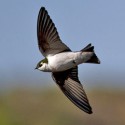
Help Track Aerial Insectivores
Imagine the majestic grace of a Tree Swallow in flight. Imagine the aerial acrobatics of a Barn Swallow over a grassy meadow on a warm summer evening. Now imagine a world where these lovely birds are disappearing. This is the world in which we live.
Tree Swallows and Barn Swallows, along with Violet-green Swallows, Purple Martins, and Eastern Phoebes, belong to a group of birds known as aerial insectivores. Their agile flight style enables them to effectively hunt their primary prey, flying insects. Over the past 30 years, populations of many aerial insectivores have declined, and the cause remains unknown. However, scientists have theorized that it may be linked, in part, to declines of some insects on which these birds depend.
According to Dr. Amanda Rodewald, Director of Conservation Science at the Cornell Lab of Ornithology, “Recent population declines in North America’s aerial insectivores are a growing concern. Conservation efforts to halt or reverse these worrisome trends are unlikely to succeed until we fully understand the causes of decline. One thing limiting our ability to identify factors driving population declines is a lack of information on reproduction.”
You can help scientists study and understand the plight of the aerial insectivores by monitoring their nests for NestWatch. The nests of many aerial insectivores are easy to find and observe. Tree Swallows and Violet-green Swallows readily use nest boxes, Barn Swallows often plaster their nests onto beams inside barns and under bridges, Purple Martins use large communal nesting houses, and Eastern Phoebes frequently nest under porch eaves and in garages. For more information on how to find these nests, and those of many other species, visit the NestWatch Focal Species webpage. Start NestWatching today and make a difference!
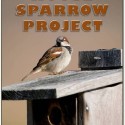
Calling All Nest Monitors
What do nest monitors, researchers, bluebirds, and other native cavity nesters have in common? We all deal with House Sparrows! As spring arrives and birds begin nesting, the House Sparrow Project invites you to collaborate in citizen-science research on this nonnative species. Whether you have a handful of nest boxes or a large trail, and whether you actively or passively manage sparrows, there are only three requirements for participation: curiosity, nest boxes, and a promise to keep good records.
Researchers at Hunter College and the Cornell Lab of Ornithology want to spearhead this citizen science research project in collaboration with YOU! And there is more than one way you can participate:
- Collectively design best practices for House Sparrow management. Participants and researchers will discuss the array of management practices out there and collectively design a field experiment to evaluate a subset of these.
- Advance research by collecting much-needed data on nesting behavior and egg recognition. The research is fun: color House Sparrow eggs, take photos, collect data, share and compare information with others.
- Participate in discussion groups online to share your insights and ideas.
Everyone is invited to participate. Visit our website at www.housesparrowproject.com to get more information and sign up today!
Sincerely,
The House Sparrow Project Team
Dr. Mark Hauber
Dr. Caren Cooper
Ms. Dennise Belmaker
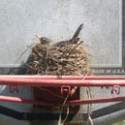
Get Funky!
Look inside an old boot, barbecue grill, or mailbox–or on a street sign, clothesline, or stoplight. Funky nests are everywhere! Take the “Funky Nests in Funky Places” challenge for a chance to win great prizes, including binoculars, bird feeders, and an iPad. Send your photo, story, video, song, poem, or art to the Cornell Lab’s Funky Nests contest beginning May 1.
Participate with your grandchildren, classroom, workplace, or on your own—just use any creative way you can think of to show or describe a bird’s nest in a funky place. Entries from all over the world are accepted! This year’s categories include: Funniest, Most Inconvenient, Funkiest, and Sweetest. Find out more.
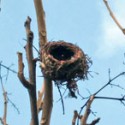
New Archive Tool
Now your spring cleanup can include your nest map, too! We are pleased to announce that now you can archive records of old nests that no longer need to appear on your nest map. Use this tool to hide your data on one-time nests that were never reused, like an American Robin nest on your porch light. You can also archive old nest-box sites that no longer exist, such as a box that was removed or was in a tree that fell down.
The archive tool is intended to hide sites that you no longer need to manage, but the data associated with them remain in our database (and available for download). Archiving is easy and reversible. To try it, click on your “Manage Location” button and choose “Archive Nest.” Accidentally archive the wrong nest? Just re-activate it.
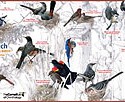
Monthly Winner
At the beginning of each month, NestWatch randomly selects one participant who has entered data that month to receive a copy of the NestWatch Common Nesting Birds of North America poster. This month’s lucky winner is Stephen Rhyne. Congratulations, Stephen!